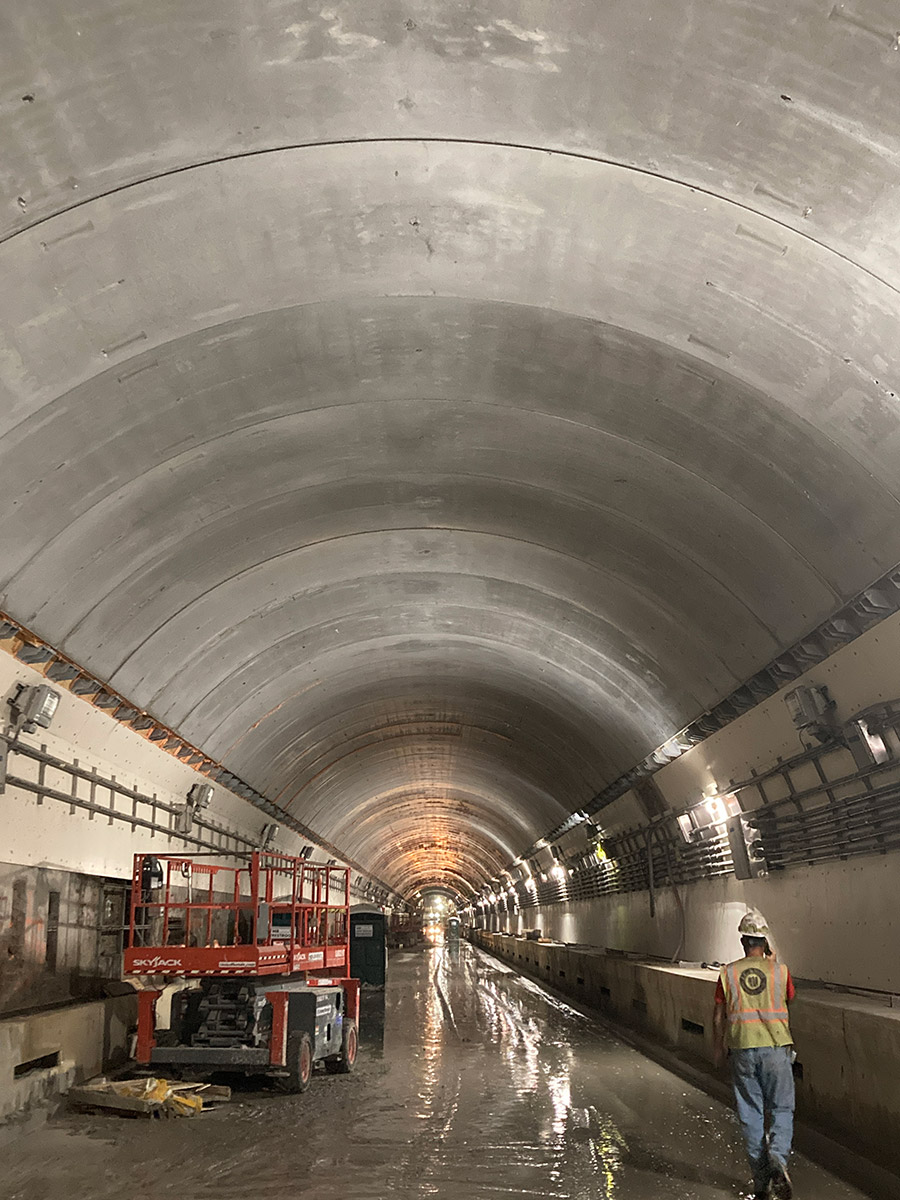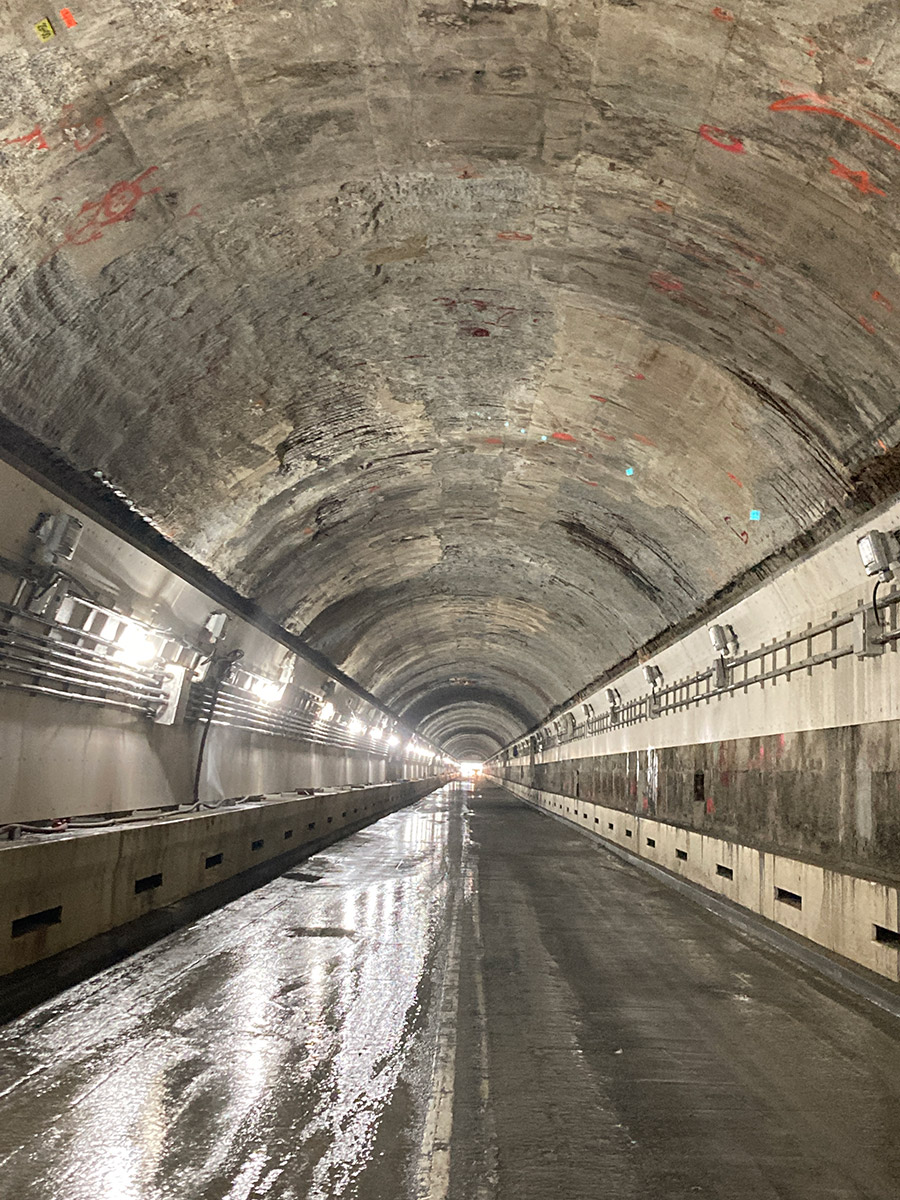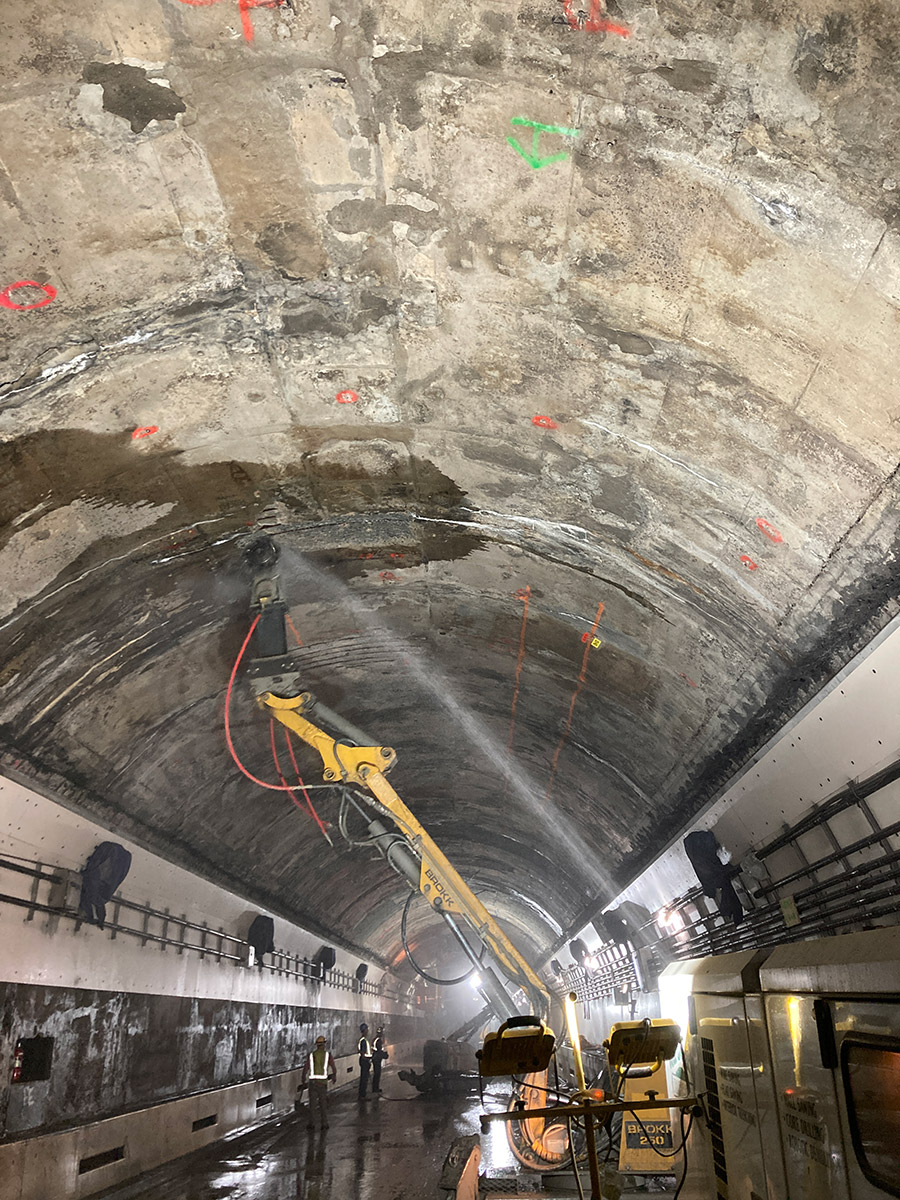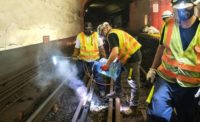Boston’s Sumner Tunnel Renovation Kicks Into High Gear
Series of weekend closures moves the $160-million project closer to halfway mark

Crews installing support brackets for precast concrete arch segments on the 90-year-old Sumner Tunnel in Boston.
Photo courtesy MassDOT
The renovation and restoration of Boston's nearly 90-old Sumner Tunnel is roughly 40% complete, a top project manager says. Work on the $160-million design-build project began a year ago, with a series of weekend tunnel closures that enabled repairing and replacing concrete and rebar, among other things.
The project recently kicked into a higher gear, with the tunnel—which connects Boston Logan International Airport and East Boston to the city's downtown and points west—in the middle of an eight-week shutdown that began in early July and will continue until the end of August.

New precast concrete arches, freshly installed
Photo courtesy MassDOT
Work is on a 24-hour schedule, with three eight-hour shifts, with the number of workers having reached a peak of about 200, says Chris Blanchard, project manager for general contractor J.F. White Contracting Co.
Planning for the project began a decade ago, when tunnel deterioration became noticeable, said state highway agency Administrator Jonathan Gulliver. The first traffic tunnel in Massachusetts, Sumner opened in 1934 and is one of four routes into Boston, with 39,000 vehicles traveling through it per day on average.
One of the most high-profile construction jobs in Boston, the Sumner work requires a major reset of the city’s transportation network. To offset traffic from the shutdown, transit agency MBTA says its Blue Line is free with reduced fares on the regional commuter rail and free ferry services also being offered.

Existing tunnel ceiling, ready for precast installation
Photo courtesy MassDOT
“It has been relatively smooth so far,” Blanchard said.
During the eight-week shutdown, crews are replacing the tunnel ceiling, upgrading and updating communications systems and lighting and installing new cameras and radio systems.
Also installed are fire resistant boards designed to protect concrete behind them and withstand a direct flame for two hours. Fire retardant materials have also been mixed into the concrete.
For the new tunnel ceiling, there are 783 pre-cast concrete arches that will span its length, each weighing six tons and measuring 22.7 ft across, and being brought in one at a time via forklifts, according to Blanchard.

Precast arch panel being put into place.
Photo courtesy MassDOT
Workers are also putting into place 1,200 flat slab ceiling panels that will hang from the arches. “We pick it up with a large forklift and drive it down the tunnel,” he said.
Meanwhile, the next phase of the project—stripping down and replacing roadway in the tunnel—will take place during a two-month shutdown next summer. To cushion the blow to commuters and others, state transportation officials decided to spread the shutdowns over two summers, rather than shutting the tunnel down for a single, four-month period.
“It was a lot of risk doing it that way,” Gulliver said. “The traffic management would be incredibly difficult.”

One of 783 precast concrete arches being put into place.
Photo courtesy MassDOT
For J.F. White, which came up with the idea to split work into two phases, the tunnel is familiar territory.
The contractor oversaw the last round of work on Sumner in the 1990s. The engineer on the project is McMillen Jacobs, with while key subs Atlantic Coast handling demolition and Saugus Construction providing the iron workers.
United Concrete in Connecticut produced the pre-cast arches.

Preparing existing concrete ceiling for precast arch installation
Photo courtesy MassDOT
Working on the tunnel repair has also provided a history lesson when it comes to construction techniques, say both state officials and J.F. White’s Blanchard.
With building methods less exact when the tunnel was built, contractors and engineers compensated for the relative lack of precision by overbuilding, using more concrete and other material than would be needed today.
“Materials and labor were cheap,” Gulliver said. “It was pretty easy to overbuild things to make sure you were on the safe side.”





